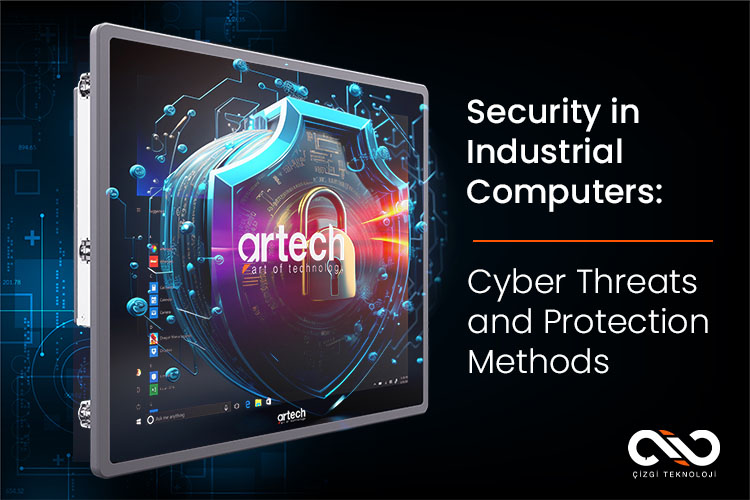Cybersecurity for Industrial Computers

Industrial computers are utilized in various critical areas, from production lines to energy management, water treatment plants, and transportation systems. The cybersecurity of these systems is crucial for operational continuity, data protection, and overall business performance. How can industrial computer cybersecurity be ensured? Here are the most common threats and protection methods.
Cybersecurity Threats
The primary cybersecurity threats faced by industrial computers include:
- 1. Malicious Software: Viruses, trojans, and ransomware can damage systems and access sensitive data, compromising system performance and data integrity.
- 2. Network Attacks: DDoS (Distributed Denial of Service) attacks, unauthorized access, and network snooping can disrupt traffic and lead to data breaches. Preventing cyberattacks in factories involves strengthening network security solutions.
- 3. Data Breaches: Unauthorized access to sensitive data can result in data loss and financial damages. Best practices for SCADA system security include encryption and strict access controls.
- 4. Zero-Day Attacks: These attacks exploit unknown or unpatched vulnerabilities before security patches are implemented, making them particularly dangerous.
- 5. Insider Threats: Employees or contractors can pose internal security risks, either intentionally or unintentionally, through information theft, sabotage, or negligence.
Protection Methods Against Threats
- 1. Strong Password Management: Passwords should be complex, unique, and updated regularly. Additionally, implementing two-factor authentication (2FA) and multi-factor authentication (MFA) enhances security.
- 2. Software Updates: Security solutions for industrial control systems should include the latest security patches to mitigate known vulnerabilities.
- 3. Network Security: Firewalls and network monitoring systems should be deployed to prevent unauthorized access and continuously monitor network traffic. Advanced security measures like network segmentation can further enhance protection.
- 4. Data Backup: Cybersecurity strategies for industrial IoT devices should include regular backups and encryption. Cloud-based backup solutions offer secure and accessible storage options.
- 5. Employee Training: Raising cybersecurity awareness among employees minimizes human errors and reduces security risks.
- 6. Cybersecurity Policies: Businesses must establish and regularly update their security policies. Best practices for SCADA system security should involve strict access controls and secure remote connections.
- 7. Incident Response Plans: Defining response steps for cyberattacks is critical. Cybersecurity strategies for industrial IoT devices should incorporate incident response planning.
- 8. Compliance and Regulations: Adhering to industry regulations and compliance requirements (e.g., ISO 27001, NIST) ensures a robust cybersecurity framework.
Conclusion
The cybersecurity of industrial computers is essential for business success and sustainability. By implementing strong password management, software updates, network security, and data backup strategies, industrial computer security can be strengthened. Additionally, employee training, cybersecurity policies, incident response plans, and compliance requirements contribute to making businesses more resilient to cybersecurity threats. These measures enhance operational efficiency and mitigate security concerns, ensuring a more secure and efficient industrial environment.



 English
English
 TR
TR